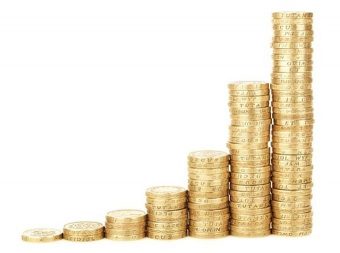
Most countries’ plans for reducing greenhouse gases rely heavily on energy efficiency programs. So, even if you aren’t an energy efficiency specialist, it’s important to understand how, and how well, those savings get counted. When it comes to measuring the impacts of energy efficiency programs, this means disentangling which energy consumption changes can be credited to the program, and which would have happened anyway. For those of you who aren’t steeped in the intricacies of this energy efficiency accounting exercise, let me provide a bit of background.
My husband often compares electricity market regulations to the rules for Dungeons & Dragons, a 1980s gaming craze that captivated some – mostly pre-teen boys – and bemused everyone else. It involved multiple 100+ page rulebooks that explained things like how many “experience points” a character might get for slaying a certain monster.
Energy efficiency policy can be as complex as Dungeons & Dragons. This isn’t a criticism. It’s endemic to energy efficiency policy for one fundamental reason: it’s really difficult to measure the savings from energy efficiency programs. There’s no meter that runs backwards to measure those savings. As a result, there are lots of discussions and evolving rules on how to measure them.
To take an example, imagine that your local utility offers rebates for homeowners who buy energy efficient hot water heaters. The task for the regulators is then to assess how much less energy homeowners will consume because of the rebate program.
One of the core issues is figuring out how many homeowners would have bought an efficient hot water heater even without the utility rebate. Those who would have are labeled “free-riders” – they get paid the rebate for doing something they would have done anyway.
A standard method for measuring savings from a rebate program is to first develop an “engineering estimate” of the savings associated with each hot water heater replacement and then add those savings up across everyone who applied for a rebate. This represents the “gross” savings.
The next step is to figure out what share of homeowners are free-riders and then take that share out in order to estimate the “net” savings. Sometimes, regulators ask consultants to survey homeowners about whether they would have bought the efficient hot water heater absent the rebates. This can be an inherently difficult process – effectively asking people to construct a counterfactual world for their past selves.
Colleagues and I have argued elsewhere that there are better ways to develop estimates of savings from energy efficiency programs, including randomized controlled trials and other quasi-experimental approaches. One of the advantages of these approaches is that they provide an estimate of the net-to-gross ratio. (They can also highlight other shortcomings of the engineering estimate approach I described above, for instance if the engineering estimates are too optimistic.)
For instance, a few years ago, Judd Boomhower and Lucas Davis applied a quasi-experimental technique to evaluate a “cash-for-coolers” rebate program in Mexico that subsidized refrigerator and air conditioner replacements. They found that even without the rebate about half of the participants would have replaced their inefficient appliances with a more efficient one, and many would have done so for a lower rebate than they were paid.
Despite this sort of evidence, I’ve heard several energy efficiency advocates, recognizing the difficulty in calculating net-to-gross ratios, assert that it doesn’t really matter. They say things like, “The climate doesn’t care about the difference between net and gross savings.” The implication seems to be that we should pat ourselves on the back for achieving the gross savings.
But, focusing on gross savings is problematic for two reasons:
We will not solve climate change by focusing only on U.S. energy customers. (This point has come up repeatedly on this blog, such as here and here.) One implication of this is that we need to export the right policies to the rest of the world. So, it’s essential to figure out whether an energy efficiency program causes people to take certain steps or whether they would have taken them anyway.
Imagine, for example, that the hypothetical utility rebate program for hot water heaters has a low net to gross ratio (i.e., a lot of people would have bought the efficient hot water heater even without the rebate). Maybe they would have bought the efficient hot water heater because of another energy efficiency policy, such as efficiency standards. We need to know if standards are doing all the heavy lifting so that other parts of the world will adopt the most effective policies.
And, it’s really true that other countries are watching what we’re doing carefully. A couple months ago, I spoke to a deputy energy minister from the Pakistani province of Punjab, who was more up-to-date on California net-metering policy than me.
It’s a waste of money. Paying people to do something they would have done anyways is not a good use of taxpayer, ratepayer or anyone’s money. If there aren’t very many cases (i.e., if the net to gross ratio is high) and it’s the inevitable outcome of an otherwise very successful program, we can live with it. But it’s important to know the net to gross ratio and not just focus on gross savings, so that we know how much money is going to waste.
Beyond this, there could be distributional implications. For example, if low-income consumers are less likely to participate in energy efficiency programs, then their rates are being used to subsidize higher income customers to do something they would have done anyway. That’s not just inefficient use of funds, it’s unfair to the neediest in our society.
So, we need to continue to sharpen our pencils and apply state-of-the-art measurement techniques to energy efficiency programs. It’s critical to know how much bang we get for every energy efficiency buck, especially in a time when the national political winds are likely to push back against government energy efficiency programs. The rest of the world is watching!
Source: energyindemand.com



